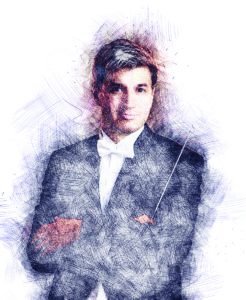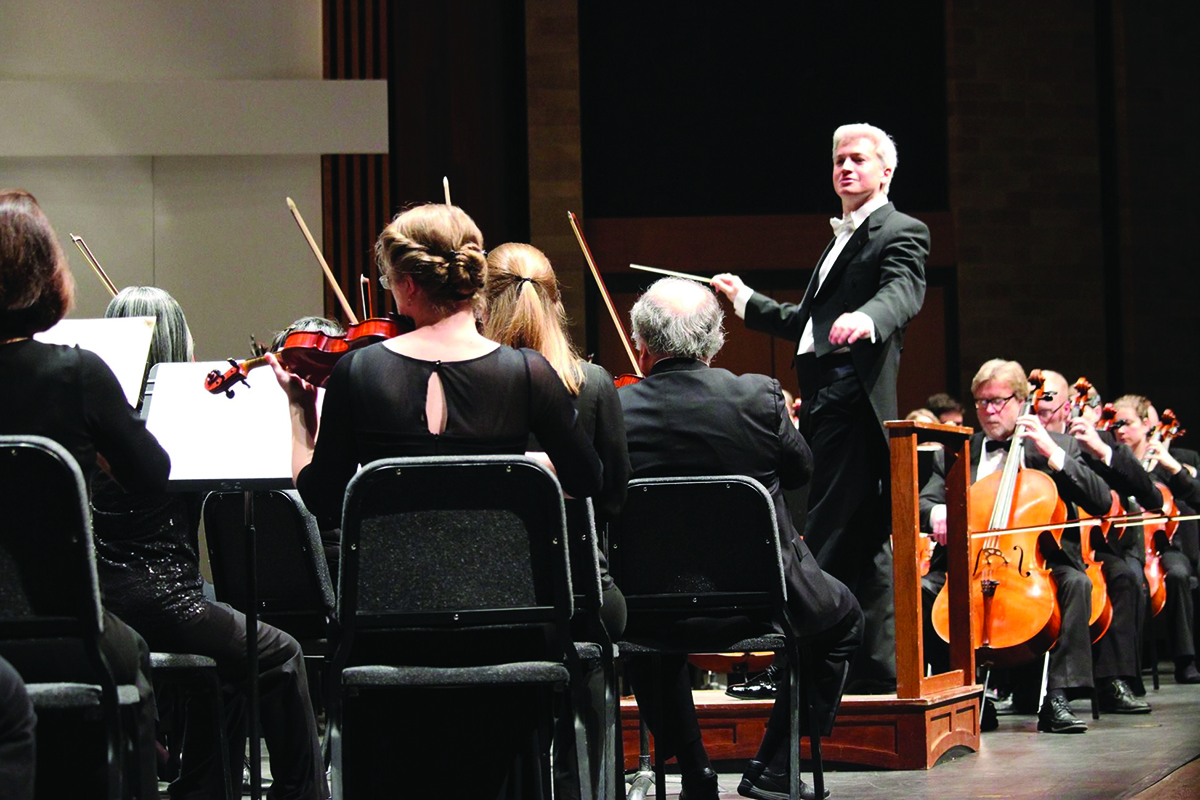Under the baton of new music director Eric Garcia, the Boise Philharmonic has already begun to soar, delivering season openers that left Treasure Valley audiences springing to their feet while the hall echoed with “Bravos!”
Garcia’s choice of repertoire, his communication style and ability to connect not only with the performers but also with audiences in Boise and Nampa presage an exciting tenure for this soft-spoken conductor.
He plunged into the 2017-2018 season in September with Carl Orff’s iconic “Carmina Burana,” a choral masterwork that married the voices of the Boise Master Chorale with the full capabilities of the Philharmonic, from the piece’s familiar bombast to its intimate whispers. Garcia balanced the Orff with Ravel’s “La Valse,” a “choreographic poem for the orchestra” that’s been described as a tribute to the waltz. How does a conductor prepare for that kind of challenge?
“I knew I was walking into rehearsal with an incredibly high-level orchestra, and I had nothing to fear,” smiled Garcia in his self-effacing manner. “You know they’ll be completely prepared, and you have to be prepared as possible. I had one rehearsal with the Master Chorale by itself and one with the orchestra by itself so that when everyone got together, we were all on the same page.”
He received rave reviews from the audience, and from the musicians and singers on his side of the proscenium. Several performers mentioned Garcia’s ability to clearly communicate what he wanted from them.
“His communication style is exceptionally clear,” commented Anne Hay, a Master Chorale singer and member of the Philharmonic’s search committee for a new music director. “His hands, face—the stick (baton)—are very clear and consistent. If the singers were slow coming in on cue, rather than say ‘You’re late, go faster,’ he would say ‘If you speed up two eighth notes, you’ll be right in the pocket.’”
“I enjoyed his presence,” said Vicki Kreimeyer, another Master Chorale soprano and Opera Idaho chorus member. “He was calm, kind and extremely clear in what he wanted. He was able to communicate very clearly without saying anything. The performances were exciting, and all of us felt good because we were able to sing with the precision and contrast that this piece requires.”
Garcia prepares by diving deep into the score itself, as well as the history that surrounds it. “I study as much of the historical factors surrounding the composer as possible—what details may have affected the composition of the work,” Garcia explained. “I start with a wide historical lens, then I look at the piece from a music theory perspective: harmony, phrasing, structure. I start with pieces of the work, then slowly start to put it back together. Conducting is the opposite process: in rehearsal you take it apart again, musical section by section, then put it back together as a whole.
“You can tell if you’re ready when you have a strong opinion on every detail of the work—phrase by phrase tempo. It’s something that you feel instinctively.”
Danial Howard, a 12-year veteran of the Philharmonic who has played bass trombone under several music directors, appreciates Garcia’s style. “He runs a very detailed rehearsal and leaves no stone unturned,” said Howard. “His style is one of action. By that I mean he shows the orchestra what he wants. Many conductors will use clever stories and metaphors to get what they want. Eric can do that when he chooses, but first he shows us. I like working with a man who so thoroughly knows the musical score. He knows every single note and nuance. He uses the published score, but he doesn’t need it. Watch him at a concert and you’ll see the music in front of him but he’s not looking at it. He’s looking at the orchestra.”
Connecting with the musicians is at the heart of how Garcia conducts. “There is a level beyond technical that can’t be charted or explained,” he said. “And when we communicate in performance, that’s the level we experience.”

Photo illustration by Mary Rodriguez
Garcia prepares by diving deep into the score itself, as well as the history that surrounds it.
Garcia said he’s drawn to repertoire of all styles and periods, evidenced by his ease with the complex Tchaikovsky, Shostakovich and Prokofiev pieces in his audition concert and his collaborations with a wide range of contemporary artists such as Pink Martini, Brandi Carlisle, Herbie Hancock, Marvin Hamlisch and the Indigo Girls, to name a few.
“I’m very excited about this season’s concerts,” he said. “I think it’s great that we’re featuring works by American composers and being part of the world-wide celebration of Leonard Bernstein’s 100th birthday year.”
Garcia promises to program as much varied repertoire as possible, which he see as a bridge to interaction with the community. Already, his programming pairings are like fabulous food and vintage wine: Berlioz and Mason Bates, Osvaldo Golijov and Samuel Barber (featuring acclaimed Idaho soprano Cecilia Lopez), and Adam Schoenberg and Beethoven.
Garcia, his fiancée Sarah and their dog Eddie arrived in Boise from Seattle, where Garcia had been assistant conductor for the Seattle Symphony. He received his master’s degree in orchestral conducting and his doctorate in musical arts from Northwestern University. His secret off-the-podium passion is golf. “I’m a bad golfer,” he grins, “and I don’t play nearly enough but I find it very relaxing. Perhaps one day I’ll be brave enough to step foot on a course here!”

